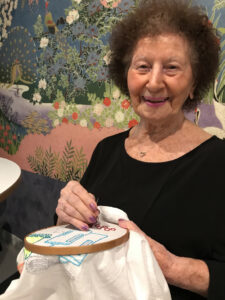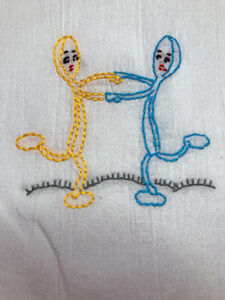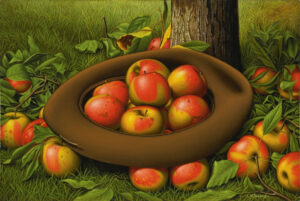That’s my mom, Millie, and on Saturday, it’s her 95th birthday. A few months ago she picked up her embroidery hoop for the first time in years and made a few hand embroidered flour sack tea towels. She enjoyed it so much, she bought more towels. And more again. And early this summer, at 94, Mom began a new venture: Millie’s Tea Towels. We sell them for her on the Convivio Bookworks website and give her the full amount of each sale. It’s the biggest thrill for her when she sells one. For her 95th birthday, my goal is to give her a really big thrill… hence a special Convivio Bookworks sale this week (and one where you get the gift!):
Save $9.50 when you buy any four Millie’s Tea Towels (or one 7-day set), and get free domestic shipping, too! Use discount code HAPPYBIRTHDAY at the check out. Easy as pie! There are nearly a hundred different designs to choose from, and each big thirsty flour sack towel is embroidered by hand by Millie herself. It takes her about a day to embroider each one––a process she just loves. Click here to shop… you’ll find Millie’s Tea Towels in the new Linens & Textiles part of our online catalog (along with some other fine new items).
Happy Birthday, Mom!



